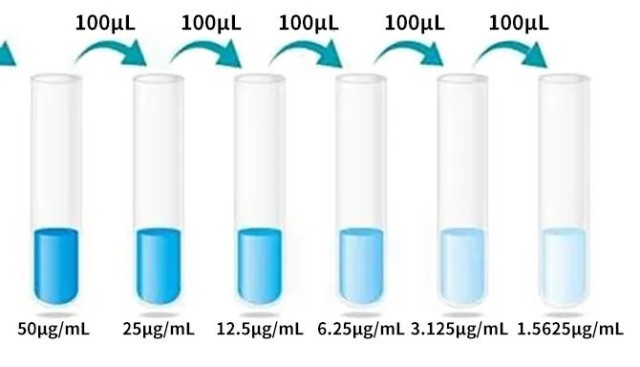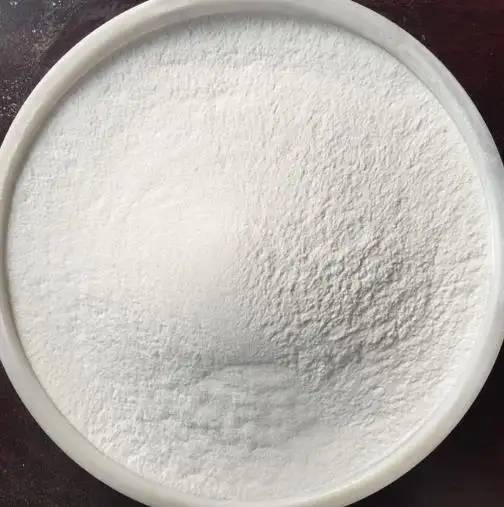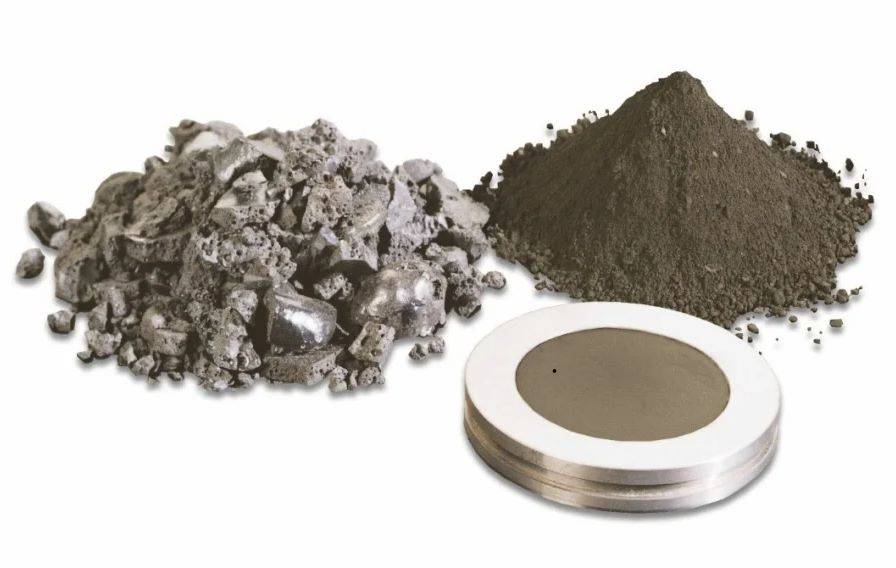Importance of Dilution Ratios in XRF Pelletising
Table of Contents
What is Dilution Ratio?
Dilution ratio is the ratio of the sample material to the diluent used in creating the XRF pellet. The diluent is important in ensuring that the sample is evenly distributed throughout the pellet and that the pellet is strong enough to withstand the pressure applied during analysis.
Finding the Optimal Balance
Finding the optimal balance between sample material and diluent is crucial to obtaining accurate and reliable results. Too much diluent can lead to poor sensitivity and precision, while too little can result in a loss of accuracy and reproducibility. The importance of dilution ratios in XRF pelletising cannot be overstated, as it directly impacts the quality of the data obtained from the analysis.

Importance of Sample Dilution Ratio
The amount of diluent used in XRF pelletising should be consistent across all samples to avoid introducing errors into the analysis. Researchers and scientists must carefully consider the properties of their samples and the specific requirements of their analytical techniques when determining the appropriate dilution ratios to use. A typical sample dilution ratio is a 20/30% binder to sample ratio.
Risks of Over-Diluting or Under-Diluting
Over-diluting a sample can result in a lack of sensitivity, leading to poor precision and accuracy. Under-diluting a sample, on the other hand, can lead to weak pellets that can break, damaging the spectrometer and destroying a sample.
Summary
In summary, dilution ratios play a critical role in XRF pelletising. Finding the optimal balance between sample material and diluent is crucial to obtaining accurate and reliable results. Researchers and scientists must carefully consider the properties of their samples and the specific requirements of their analytical techniques when determining the appropriate dilution ratios to use. With the right approach and attention to detail, however, XRF analysis can provide invaluable insights into the chemical composition of a wide range of materials, making it an essential tool for a variety of scientific disciplines.

Optimal Binder/Sample Ratio
The optimal balance of binder and sample ratio is essential in XRF pellet preparation to achieve accurate and precise results. Too much binder can cause an increase in background noise, while too little binder can result in poor pellet cohesion. The sample-to-binder ratio also affects the pellet's homogeneity and stability.
Selecting the Right Dilution Ratio
The correct dilution ratio ensures that the pellet is strong enough to withstand the intense pressure required for XRF analysis while maintaining a homogeneous mixture of sample and binder. The optimal ratio depends on various factors such as the type of sample, the type and quantity of binder, and the analysis method. It is crucial to keep track of the dilution ratios used to identify the optimal ratio for each sample type.
Factors Affecting Optimal Ratio
Several factors affect the optimal binder/sample ratio. For example, the type of sample being analyzed can play a significant role in determining the optimal ratio. Some samples may require more binder than others, depending on their properties.
The type and quantity of binder used also influence the optimal ratio. Some binders may require a higher concentration than others to achieve the desired results.
Methods to Determine Optimal Ratio
Several methods are available to determine the optimal ratio, including trial and error, statistical analysis, and software-based optimization. Trial and error involve testing various ratios to determine the optimal one. This method is time-consuming but can be effective for small sample sizes.
Statistical analysis involves analyzing data to identify trends and patterns in the results. This method can be useful for larger sample sizes, but it requires more resources and expertise.
Software-based optimization involves using specialized software to identify the optimal ratio based on various inputs. This method can be effective for large sample sizes and is relatively easy to use.
Conclusion
In conclusion, finding the optimal balance of binder and sample ratio is crucial in XRF pellet preparation to obtain reliable and accurate analytical results. Selecting the right dilution ratio and understanding the factors that affect the optimal ratio are essential for achieving the desired results. The method used to determine the optimal ratio will depend on the sample size, available resources, and level of expertise.
Risks of Under or Over Diluting
When preparing XRF pellets, finding the optimal dilution ratio is essential to achieve accurate and precise results. Under-diluting the sample can lead to inaccurate results, while over-diluting the sample can lead to poor analytical sensitivity and precision. Therefore, it is crucial to consider the sample composition and perform preliminary experiments to determine the optimal dilution ratio.
Risks of Under Diluting
Under-diluting a sample can lead to inaccurate results because the concentration of the analytes of interest may be too high, leading to an overload of the detector. This can result in saturation of the detector, which can cause the X-ray fluorescence signal to be too strong, leading to inaccurate results. Moreover, it can lead to spectral interferences, which can cause false positives or negatives in the analysis.
Risks of Over Diluting
Over-diluting a sample can lead to poor analytical sensitivity and precision because the concentration of the analytes of interest may be too low. This can result in a weak X-ray fluorescence signal, which can cause poor analytical sensitivity. Moreover, it can lead to a high level of background noise, which can cause poor analytical precision. Over-diluting can also result in the loss of trace elements that are of interest, leading to incomplete or inaccurate analysis.
Optimal Dilution Ratio
The optimal dilution ratio depends on the sample matrix and the analytes of interest. Therefore, it is crucial to consider the sample composition and perform preliminary experiments to determine the optimal dilution ratio. Proper dilution ratios are essential to achieve accurate and precise results in XRF analysis. It is a critical factor that can affect the quality of data and the reliability of the analysis. It is therefore essential to follow the recommended guidelines and procedures to ensure that the optimal balance is achieved and that the risks of under or over diluting are minimized.
In conclusion, dilution ratios are critical in XRF pelletising, as they determine the accuracy and precision of the analysis. Finding the optimal dilution ratio is essential to achieve accurate and precise results. Under-diluting the sample can lead to inaccurate results, while over-diluting the sample can lead to poor analytical sensitivity and precision. The optimal dilution ratio depends on the sample matrix and the analytes of interest. Proper dilution ratios are essential to achieve accurate and precise results in XRF analysis. It is a critical factor that can affect the quality of data and the reliability of the analysis.

Benefits of Using a Controlled Dilution Ratio
Accurate sample preparation is a crucial step in obtaining reliable results from X-ray fluorescence (XRF) analysis. Dilution is an important aspect of sample preparation, where the sample is mixed with a matrix material to ensure uniformity and accuracy of analysis. The dilution ratio, which is the amount of sample material relative to the amount of matrix material used, plays a critical role in obtaining accurate results. Here are some benefits of using a controlled dilution ratio:
1. Improves accuracy and reproducibility of results
Using a controlled dilution ratio ensures that the sample is properly dispersed throughout the matrix material, leading to more accurate and reproducible results. This reduces the likelihood of errors and inconsistencies in the analysis, which can be caused by uneven mixing of sample and matrix materials.
2. Reduces the risk of contamination
Contamination is a significant concern in XRF analysis, especially when analyzing trace elements. Using a controlled dilution ratio reduces the risk of contamination, as it ensures that the sample is properly mixed with the matrix material, reducing the likelihood of contamination from external sources.
3. Minimizes the effects of sample heterogeneity
Sample heterogeneity can cause variations in the results obtained from XRF analysis. By using a controlled dilution ratio, the effects of sample heterogeneity can be minimized. This is because the sample is properly dispersed throughout the matrix material, reducing the impact of any variations in the sample.
4. Improves efficiency in the laboratory
Using a controlled dilution ratio can improve efficiency in the laboratory by reducing the need for repeated analyses due to inaccurate or inconsistent results. This helps to save time and resources, allowing laboratory professionals to focus on other critical tasks.
In conclusion, using a controlled dilution ratio in XRF pelletizing offers many benefits, including increased accuracy and reproducibility of results, reduced risk of contamination, and improved efficiency in the laboratory. By following best practices for dilution ratios, laboratory professionals can help ensure that their XRF analyses are as accurate and reliable as possible.
How to Determine the Optimal Dilution Ratio
To achieve accurate and reliable results in X-ray fluorescence (XRF) analysis, it is crucial to determine the optimal dilution ratio for each unique sample type. Here are the steps to follow to determine the optimal dilution ratio:

Step 1: Know the Variables
To determine the optimal dilution ratio, it is essential to understand the variables that can affect it. These variables include the type of sample material, the particle size distribution, and the binding agent used. Knowing these variables can help you choose the appropriate dilution protocol for your sample type.
Step 2: Conduct a Series of Experiments
To determine the optimal dilution ratio, a series of experiments using different ratios should be conducted. This involves mixing the sample material with a binding agent at different ratios and pressing them into pellets for XRF analysis. It is important to keep the sample amount and pressure constant for each pellet that is prepared to minimize X-ray intensity changes.
Step 3: Evaluate the XRF Data
After conducting the experiments, evaluate the resulting XRF data. A dilution ratio that produces a strong signal with low background noise is considered optimal. However, it is important to note that the optimal dilution ratio may vary depending on the sample type and analytical requirements.
Step 4: Choose the Optimal Dilution Ratio
Based on the evaluation of the XRF data, choose the optimal dilution ratio for your sample type. This dilution ratio should provide accurate and reproducible XRF results.
By following these steps, you can determine the optimal dilution ratio for your sample type and ensure the accuracy and reproducibility of XRF results. Remember to establish an appropriate dilution protocol for each unique sample type to achieve the best possible results.
Experimental Process for Determining Dilution Ratio
To find the optimal dilution ratio for XRF pelletising, an experimental process is used. This process involves a series of steps to determine the best dilution ratio for a given sample. Here are the steps involved in the experimental process:
Step 1: Sample Preparation
The first step is to prepare a series of samples with varying dilution ratios. The samples should be prepared using the appropriate sample preparation method for the specific sample type. For example, for materials like plastics or fibers, crushing and grinding may be necessary to reduce their size, while for loose powders and granulates in liquid cups, the samples can be analyzed 'as is' in the liquid cups.

Step 2: Testing the Samples
Once the samples are prepared, they are tested using the XRF instrument to determine the concentration of the analyte. The tests are performed on each sample in the series, and the results are recorded.
Step 3: Analyzing the Results
After testing, the results are analyzed to determine the optimal dilution ratio. The optimal dilution ratio is the one that produces the most accurate and reliable results while ensuring that the concentration of the analyte is within the detectable range of the XRF instrument.
Step 4: Repeating the Process
It is important to note that the optimal dilution ratio will vary depending on the type of sample being tested and the specific XRF instrument being used. Therefore, it is essential to conduct this experimental process for each new sample type and instrument.
Step 5: Using the Optimal Dilution Ratio
Once the optimal dilution ratio is determined, it should be used in future XRF pelletising processes for that particular sample type and instrument. This will ensure that the results obtained are accurate and reliable.
In conclusion, determining the optimal dilution ratio for XRF pelletising is a crucial step in obtaining accurate and reliable results in laboratory analysis. The experimental process involves preparing a series of samples with varying dilution ratios, testing them using the XRF instrument, analyzing the results, and repeating the process for each new sample type and instrument. By following these steps, laboratory professionals can ensure that they obtain the best possible results from their XRF analysis.
Related Products
- Automatic Laboratory Hydraulic Press for XRF & KBR Pellet Press
- XRF & KBR plastic ring lab Powder Pellet Pressing Mold for FTIR
- XRF & KBR steel ring lab Powder Pellet Pressing Mold for FTIR
- Laboratory Hydraulic Pellet Press for XRF KBR FTIR Lab Applications
- XRD Sample Holder X-ray Diffractometer Powder Slide
Related Articles
- Understanding Cold Isostatic Pressing: Process, Comparisons, and Applications
- Understanding Cold Isostatic Pressing (CIP) and Its Advantages
- Understanding the Technical Aspects of Cold Isostatic Pressing
- Effective Preparation of Samples for XRF Analysis via Pressed Pellets Method
- Why Your Sample Prep Fails: The Hidden Flaw in Your Hydraulic Press












